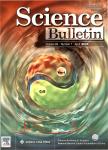多碳生成工厂:用于提高CO_(2)电催化生产率的CuO/Ni单原子串联催化剂
Multicarbons generation factory:CuO/Ni single atoms tandem catalyst for boosting the productivity of CO_(2)electrocatalysis作者机构:International Collaborative Laboratory of 2D Materials for Optoelectronic Science&Technology of Ministry of EducationEngineering Technology Research Center for 2D Materials Information Functional Devices and Systems of Guangdong ProvinceInstitute of Microscale OptoelectronicsShenzhen UniversityShenzhen 518060China Department of ChemistryCollaborative Innovation Center of Chemistry for Energy Materials(iChEM)University of Science and Technology of ChinaHefei 230026China School of ScienceHubei University of TechnologyWuhan 430068China
出 版 物:《Science Bulletin》 (科学通报(英文版))
年 卷 期:2022年第67卷第16期
页 面:1679-1687,M0004页
核心收录:
学科分类:081705[工学-工业催化] 08[工学] 0817[工学-化学工程与技术]
基 金:supported by the National Key R&D Program of China(2020YFA0710200) the DNL Cooperation Fund,Chinese Academy of Sciences(DNL201918) the Fundamental Research Funds for the Central Universities(WK2060000004,WK2060000021,WK2060000025,KY2060000180,and KY2060000195) the National Natural Science Foundation of China(21805191) Pengcheng Scholar Program,China Postdoctoral Science Foundation(2019M653004) Shenzhen Peacock Plan(KQTD2016053112042971) Shenzhen Science and Technology Program(JCYJ20190808142001745,JCYJ20200812160737002,and RCJC20200714114434086) Guangdong Basic and Applied Basic Research Foundation(2020A1515010982) Shenzhen Stable Support Project(20200812122947002)。
主 题:单原子 电催化 还原反应 电化学 电流密度 催化位点 法拉第效率
摘 要:电化学CO_(2)还原反应(CO_(2)RR)的串联电催化策略是将CO_(2)到C_(2+)的多个步骤解耦为单独催化的CO_(2)到CO和CO到C_(2+)的两个步骤,以提高法拉第效率(FE).然而,由于CO从生成位点到反应位点的传质限制,这种策略对于C_(2+)的高速率生产仍然是挑战.本文设计了CuO/Ni单原子(SAs)串联催化剂,使得用于独立催化CO_(2)-到-CO和CO-到-C_(2+)的Ni和Cu的催化位点紧密相邻,能够原位产生和快速消耗CO.CuO/Ni SAs串联催化剂实现了高C_(2+)的部分电流密度(1220.8 mA/cm^(2)),同时仍然保持了优异的C_(2+)FE(81.4%).



